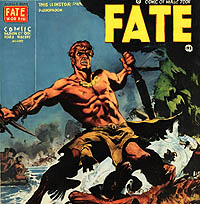Yesterday I tapped out an article on retail food in crisis and I fear failed to make some things clear.
I just declared that Just on Time retail food distribution has certain negative outcomes, which I did not explain.
Here we go.
I spent 38 years working in independent supermarkets, meaning that the retail outlets were not owned by a wholesaler, but by a retailer.
For 15 of those years I also worked in a supermarket chain as a member of UFCW Local 27, which was named Basics when I was hired, then changed to Metro, then to Shoppers. Before that it had been Super Super and before that Foodarama, which was still on our paychecks. This shows the crisis state of stores owned by a wholesaler. This chain was originally held by a Fruit company, than Superrite [which owns Rite Aid] then Richfood, which had been a co-op and became a traditional wholesaler and then by Supervalue, which acquired Richfood.
During my time working for the chain, I also worked Direct Store Delivery for Edys ice cream, Fritolay, Tombstone pizza and Little Debbie vendors and hence got to see receiving and merchandizing used by five other supermarket chains and numerous independents.
After that 15 years with the chain, during which I did management duties without pay in order to not get shipped off bus lines and have to live in a tent near my work location—with these duties including the store audit—I, after turning down 13 offers of promotion within the company, accepted a general manger position with an independent operator who owned one store that was going out of business.
After 4 years of that insanity, I quit, turned down 9 management offers with chains and independents, got a part time night crew job with an independent, consulted on a store set and reset, and then quit the business for good in December 2017.
As an independent operator, my only threats were other independents, walmarts and dollar stores. Chains were always easy to defeat because:
-1. There decision-making is centralized
-2. Their decision making was ‘cookie-cutter’ with the same solution put into action for ghetto stores, working-class stores, middle class stores and high end stores, with the result that they always fail on the low end and high end, leaving the ghetto to independents and the high end to Whole Foods, Wegemens and other gourmet outfits calibrated for that market.
-3. They practiced Just on Time supply which has various ill-effects unknown to those who implement these systems from central locations.
I only spent 4 years in a ghetto store, running it.
I spent 13 years in a high end store.
During those 13 years and in all but the 4 years as a manager in the ghetto, I also worked, or worked, in working class and middle class markets, mostly in the suburbs.
Most Just on Time Systems work without a significant stockroom, sometimes just with a dock. The highest volume store I worked at had no walk in freezer that could hold my frozen food orders. When I got to work at 10 PM the frozen order sat on 4-10 pallets on the sales floor and I had to freight it into the 120 doors before it melted.
Generally, the bigger the place is, the higher volume it is and the less relative on sight storage space it has, necessitating more frequent deliveries. A thriving independent gets 4 orders, a middling 3 and a struggling 1 per week, with one of these orders being a weekly supply of drop-shipment buy-ins, where the chain store might get their advertised merchandise every day.
The biggest outfits will have 7 orders per week, and often 2 of these orders are written “blind,” with me writing Thursday’s order on Tuesday before Wednesday’s order even shows up, me not even knowing what I’ll be short stocked or mislabeled on and what might arrive damaged, like the waffles that are always blocked under the frozen french-fries and burgers, the plastic gallons that are always blocked under the much denser half-gallon cartoons…
With no backroom space for planned repacks or overstock, Just on Time stores will generally, but not always [and it is always a bad idea] have overhead racks on the sales floor for stuff that does not fit on the shelves. In a store that gets orders every night, on a given night some dude has the night off, and most crews will just heave his entire order onto the overheads, and when he comes back to work he will have good reason to stop at the bar in the morning after working OT and not getting paid…
Besides that, 7 in 10 clerks—and I have trained about 500 and fired over 180, will throw freight on the overhead until they can’t fit anymore up there and only then attempt to put freight on the shelf. When I worked at Fort Avenue Metro, on non-truck nights I worked all the overheads for the other clerks in return for not getting fired for being late to work after running from hoodrats and cops and bailing off of buses where dudes were trying to mark me, etc…
When I did this I found that DSD vendors were keeping tens of thousands of dollars on the overhead racks perpetually, with Keebler cookies out of date for 5 years on the tops and the store clerks could give a shit so never told the boss, who could give a shit, because he couldn’t make a decision until he made a corporate call, waited a week for a conference call, then was given all kinds of action limits…
Asked to compare chain stores to independents during this period I used to laugh and would settle on the WWII war-gaming maxim concerning order of battle. How many troops are on the point of the spear getting shot at and how many are just delivering bullets, beans and gasoline?
-Soviet: 80/20 getting shot to delivering logistical support
-German: 60/40 to 40/60 depending on crisis level
-American 20/80
Most people will say, and they do in military circles, that since the Americans won that war and the Soviets lost the most men, that the American backfield strategy is best and now, the combat to logistics in the U.S. ground array must be around 10/90.
But, we have lost the idea of balance and dynamics, crucial to any crisis operation:
-German inflicted 20-1 casualties on Soviets
-Germans inflicted 3-1 casualties on Americans
And, since WWII, America has never won a decisive military victory, not even in Iraq in 1991 when coitus interruptus was practiced on a geopolitical level, against any nation larger than the state of New York. We can say all day that we could have won in Korea, Nam, Iraq, the Stan—but we did not, we settled for bloody draws, in all cases, with most of the physical damage done to the foe but most of the social damage done to America.
Just like American wars are fought for media consumption, Just on Time commercial supply chains are not designed to feed people, but to juggle money and keep that money fluidly moving. The food value of much of the 25,000 food skews is less than the commercial value and is often poison.
Just on Time systems serve the wholesaler over the retailer and the manufacturers over the wholesaler, with DSD outfits such as Coke and Pepsi actively practicing blackmail on retailers.
To begin with, the reduced stockroom is most needed to facilitate artificial expansion of brand slots, by freeing up floor space for 16 flavors of instant oatmeal instead of three. This is how manufacturers wage war against each other on the battlefield that is advertising and its expression, the retail shelf array.
So, the manufacturers demand access to that little bit of stockroom or even dock space the retailer has, by forcing advanced, out of season distributions down the supply chain, by threatening price penalties and withholding of inventory.
When I set a store in 2011 for a man and his son who wanted to get the most out of their space, I spent 160 hours editing centralized center-store wholesaler planograms, sent back $26,000 in unordered inventory, with the goal being maximum flex space. If Jim wants to order a trailer of this or that—boom—we can display it tomorrow, because we are not slaves to a Just on Time system.
The other thing that happened in 2008 and really hurt chains and helped independents—indeed, if this had not happened there might not be any independents left—is that the barely millionaire owners of small Baltimore stores could not make any money on their money, so began buying direct from manufacturers. Mister Carl was losing money in the bank, but a pallet of beans lasts for two years and gains value as it sits. The chain outfit, now the slave to the wholesaler, who becomes enthralled to the manufacturers every bit as much as a politician is the slave of the lobbyist, banker and military industrial complex, cannot do this.
Space will always be filled, even if just by a lazy janitor leaving his mop bucket somewhere. So, once I learned that the average family showed up in my store, represented by one member or the other, 4 days out of the week, I decided to rebuild my entrance displays 4 days per week, not one a week. This, along with creative buying, permitted me to expand the staff by 15%, which is all supermarkets do, is employ local people, that is other than move corporate money. Most markets lose money, some break even, some make a profit. The range is 0 to 2 cents on the dollar. Since the chains are just outlets for wholesalers who make a nickel on the dollar and they are enthralled to manufacturers who make the real money.
All markets employ local people.
Chain markets also move media currency as food.
Local independent markets also pay salaries to the owners, as the business hardly ever makes a profit and is just a way of maintaining jobs for the owners and their employees.
Chain outfits inevitably fail in crisis, as they have negative balance with the actual weight on the back end, not evenly distributed. The smaller operator has more weight upfront, risking more in liability but possessing the ability to adjust.
When I worked at Fort Avenue, we could not get Fruit and Nut candy bars because everyone knew that the milk chocolate candy bars had been put into that warehouse slot. When we called, we could not speak to a human, because we were owned by the company. Eventually, every candy clerk in the chain stopped ordering fruit and nut candy bars. The company’s response was to discontinue the second best-selling candy bar for lack of sales! The same thing happened with cake mix, pickled beets and other items in the selection, with the store manager who liked pickled beets having to go to a deli in the area to get his for dinner.
When I ran into such situations as the lead logistic guy for an independent market, I’d walk into the office, wink at the babe behind the computer and say, “Shantayvia, please find out who makes this, and who the V.P is, the guy that runs the brokerage accounts.”
My girl would then inhale so the top button on her polo shirt would pop, I’d look away, and she say all sexy like, “Oh, Mister Jimmy, you’re so smart.”
Then, while I was on the floor breaking up a white-trash event between Jim-Bob and Arthur, that was threatening to scare my middle class negro customers, my girl made the call. When I got back upstairs, she was holding the hand-scrawled note under her even more exposed cleavage, having taken another deep breath to expose her chocolate kisses as I entered the scanning office and said, “Mister Jimmy, the President’ of Polar Foods would like to speak to you—I’m rocking some verbal skills, right—I mean he didn’t even see me!”
Within 2 weeks I had a pallet of Polar kipper snacks delivered, caned in Germany, and was selling them at half the price of Safeway 2 miles across town and making twice the profit I had been making off my wholesaler kippers, which I had to sell at chain store prices. Hell, I should have rewarded Shantayvia with a shirt that actually contained her amplitude, but she just would have thrown it out…
Okay, and lets not even talk about home food deliveries and toilet tapper—no retailer makes money on toilet paper. It’s a racket. Paper products take up maximum space and the manufacturers make all the money.
As of 3/16/20, Baltimore area wholesalers are placing a 30% cap on orders, with 3,000 piece trucks being reduced to 900 piece deliveries.
According to my sources, most of what people are buying at this point there is ‘just junk” snack food and sodas, like they are prepping for a hurricane party.
Also, home food delivery is a peak prosperity final stage of decadence gimmick to slice more of the retail pie. It is an entire step more fragile than the Just on Time media currency river masquerading as food supply.
Let it die.
Make something new.











